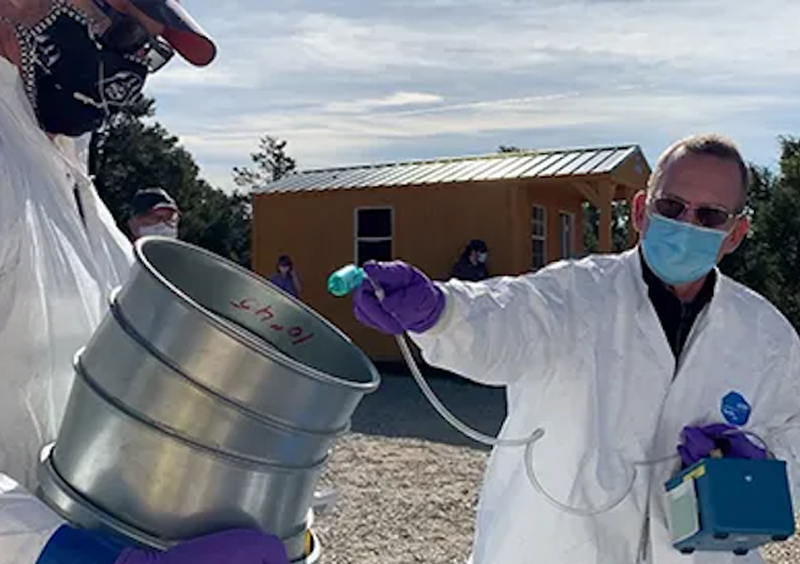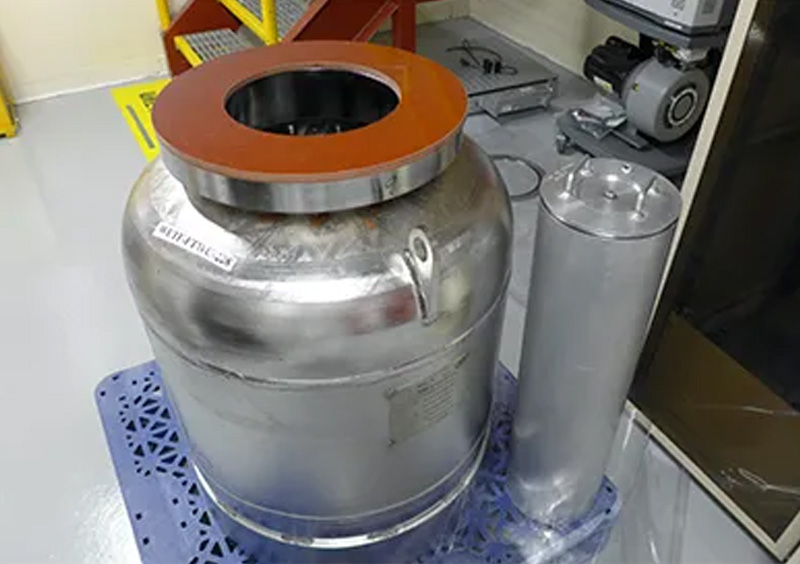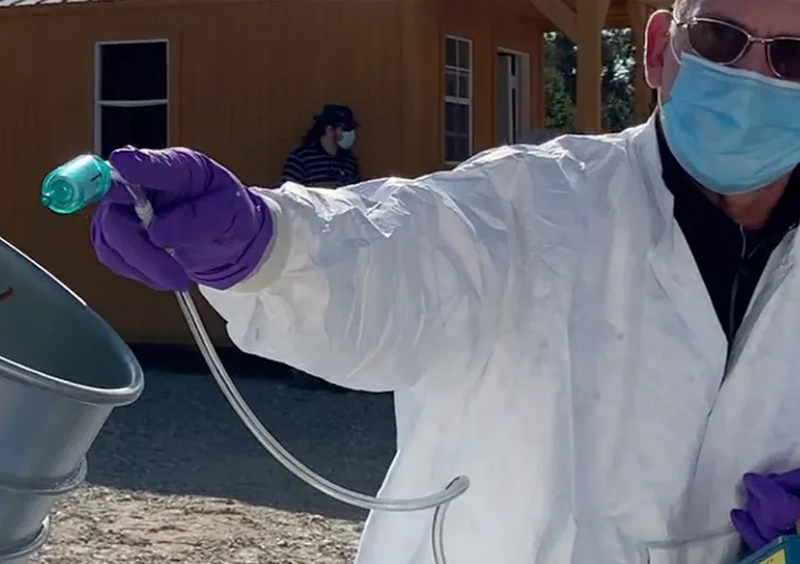The National Nuclear Security Administration (NNSA) sent this news release Tuesday (Oct. 14).
The National Nuclear Security Administration and Los Alamos National Laboratory successfully completed the depressurization of four flanged tritium waste containers and moved them to a waste staging location on site.
Offsite impacts were indistinguishable from background and pose no health or environmental consequences.
The depressurization operation began on Sept. 15 and took place over several days. Over the weekend, the crew completed movement of the containers from Technical Area 54 to the Weapons Engineering Tritium Facility (WETF). After further treatment at WETF they will be shipped to an out-of-state disposal facility.
“This was a big operation requiring quite a few people from various fields of discipline who communicated well and worked as a team,” noted Ted Wyka, manager of NNSA’s Los Alamos Field Office.
The team included mechanical technicians, radiological control technicians, sample analysis technicians and staff from environmental compliance, dose assessment, instrumentation, classification and communications offices.
“Many of them have worked on this project for several years as we refined our processes, demonstrated readiness to safely proceed and sought regulatory approval,” he said. “They were ready for the job and performed exceptionally well.”
The containers were placed in temporary storage in 2007. Over the years, pressure gradually built in the containers. Alleviating that pressure was necessary to safely prepare them for eventual shipment offsite.
“Significant scientific rigor, years of methodical planning, and an unwavering commitment to safe operations brought us to a successful completion of the FTWCs project,” said lab director Thom Mason. “We are proud of the entire team for their dedication to eliminating this risk.”
Initial data indicate that emissions for the entire operation were less than 123 curies. Using actual weather data and formally analyzing the results, the calculated off-site dose was less than .0123 millirem to a hypothetical maximally exposed member of the public. For reference, a cross-country round-trip airplane flight results in about 3.7 mrem of radiation exposure. Another analogy is that each day spent in Northern New Mexico results in about one mrem of radiation exposure, so this operation is equal to less than 20 minutes spent in Northern New Mexico.
A final report containing air-monitoring data for the entire operation will be made available to the public. NNSA and the lab will announce and hold a public meeting to discuss the report and the project.
Please continue to follow www.lanl.gov/engage/environment/ftwc for updates.





